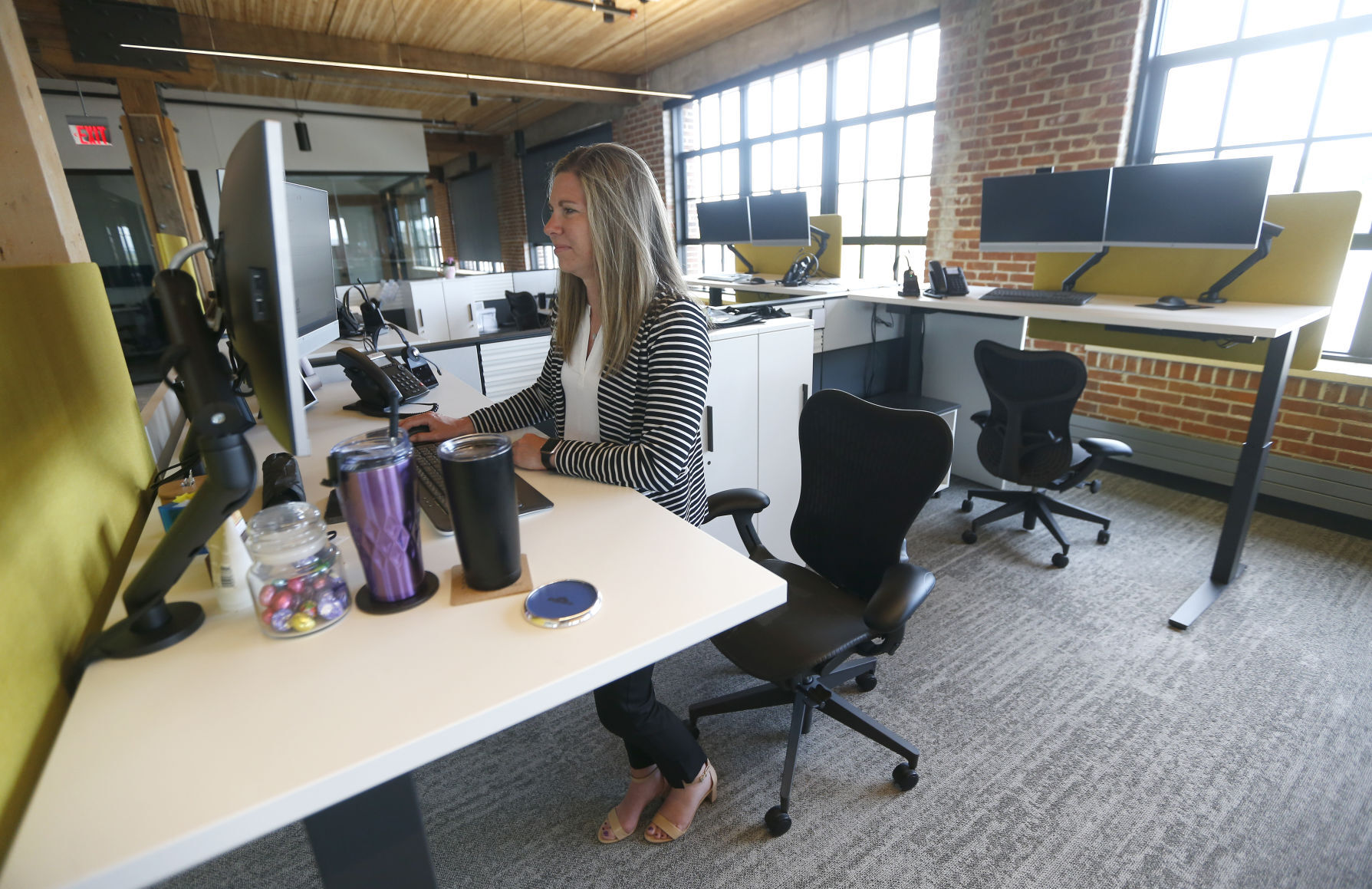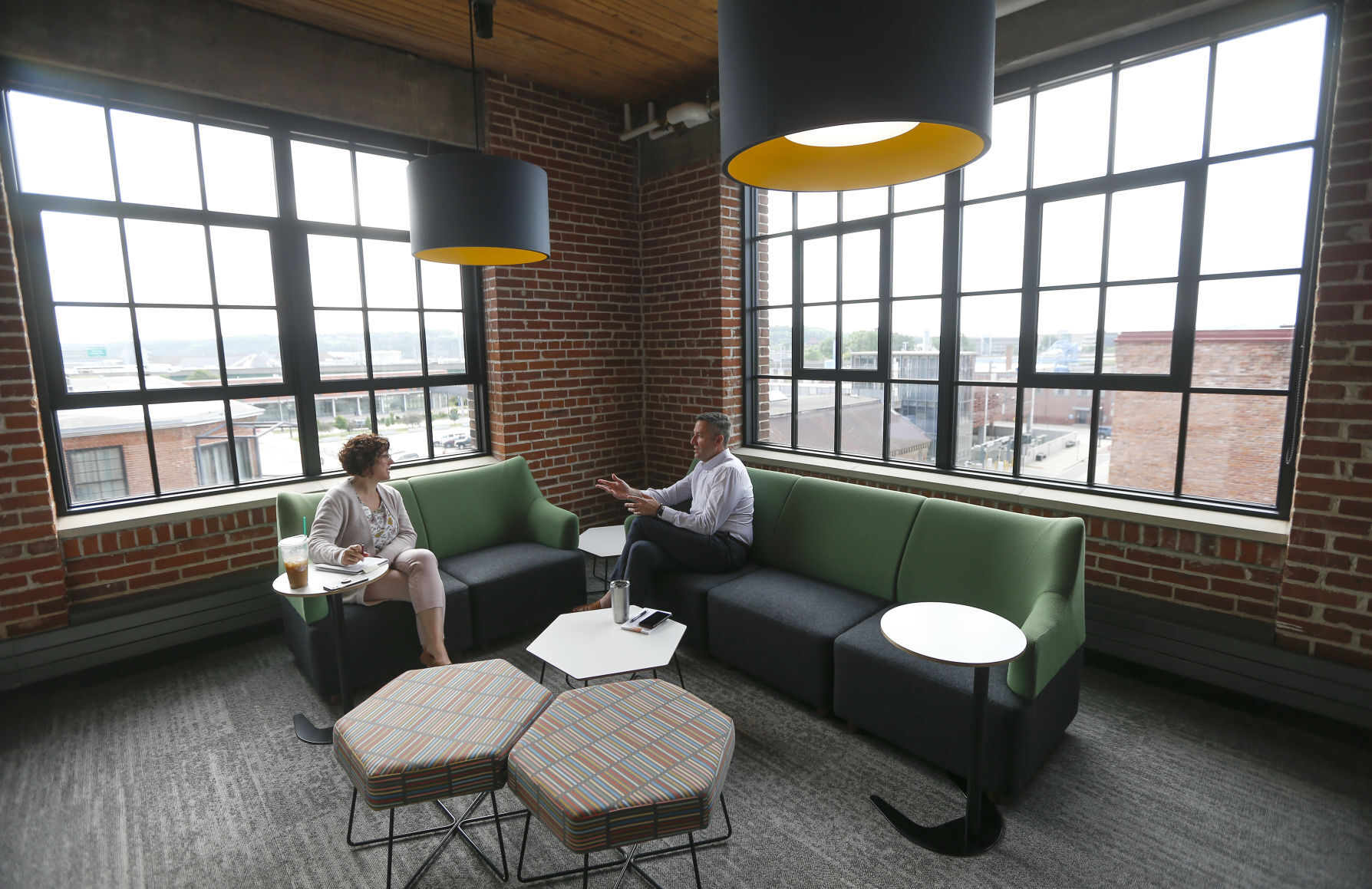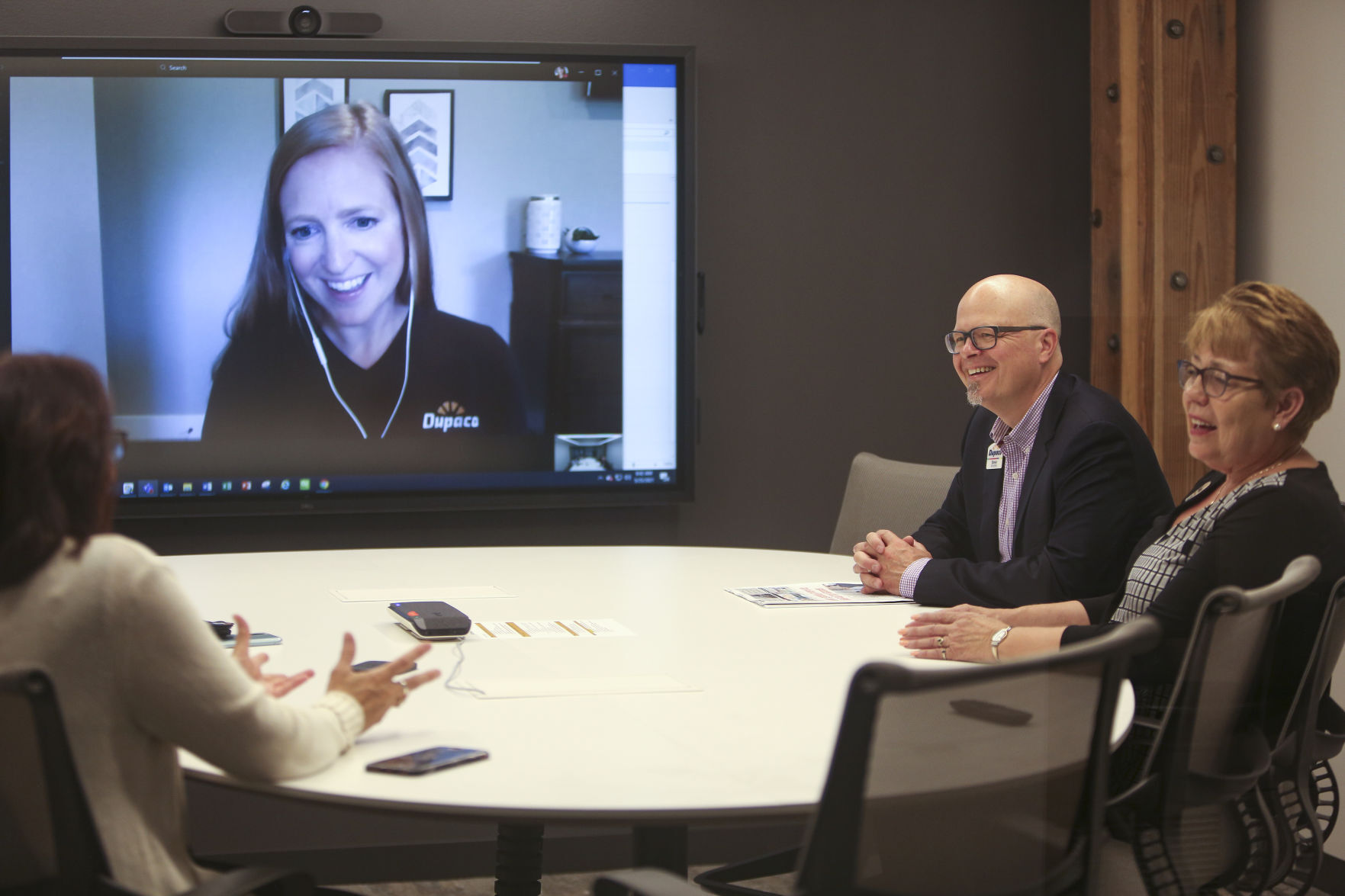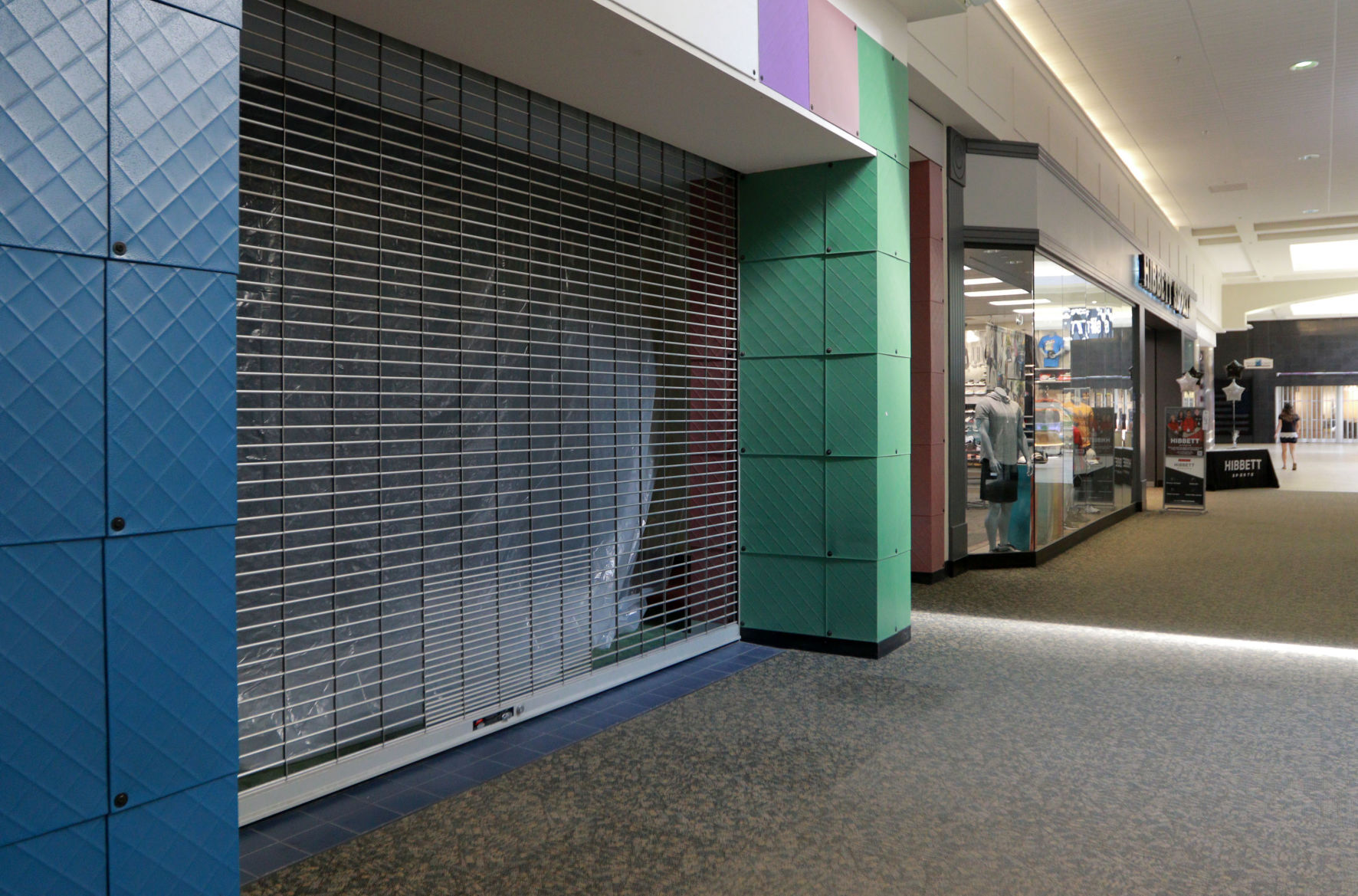The seeds for a more technology-driven lifestyle were sown long before the spring of 2020.
Virtual advances created new ways to connect and offered new conveniences, steadily transforming the way people live.
Over the course of the past 15 months, the COVID-19 pandemic has led to a dramatic acceleration of this phenomenon. As fears of the virus spread, many Americans have spent a great portion of their time staring at a screen.
Interactions with friends and family often shifted to the digital realm. Some co-workers communicated through virtual meetings rather than sitting around a conference table. Many consumers utilized phones and laptops instead of visiting stores in person.
The COVID-19 pandemic didn’t start the digital revolution. It merely accelerated it.
“These things were in motion before COVID hit,” said Nicole Hutchison, owner and CEO of Statera Integrated Health and Wellness Solutions in Dubuque. “The pandemic forced everybody into that (technologically driven) way of living, and it amplified the possible negative effects from that.”
Hutchison believes the pandemic, and the lack of face-to-face interaction, has had a “huge effect” on mental health and wellness. She has observed increases in depression, anxiety, loneliness and social isolation.
That’s far from the only noteworthy development.
A major shift in shopping patterns pushed more sales to the e-commerce arena, a trend that benefited some of the world’s biggest companies at a time when small businesses struggled.
And after seeing the feasibility of prolonged, work-from-home arrangements, employers have started to think of them as, potentially, a permanent fixture.
Mental health experts note that the confluence of these trends rapidly altered human interaction.
Carrie Merrick, vice president of behavioral health at Hillcrest Family Services, believes many people could be suffering as a result.
“The virtual interaction is a nice alternative, but it is no replacement,” she said. “You no longer have things like facial cues and body language, the gentle touch on a shoulder or arm. There is an energy there that you miss out on.”
MENTAL STRAIN
Even before COVID-19 reshaped life, mental health experts were expressing concerns about the growing amount of time that youth spent on phones, tablets and other devices.
The past year has amplified that phenomenon.
Qustodio, a company that tracks usage on tens of thousands of devices used by children ages 4 to 15, found that children’s screen time doubled during the pandemic. Much of this increased time was dedicated to social media and sites such as YouTube, the report found.
Merrick worries that this growing use of technology — and a corresponding decline in face-to-face interaction — has affected many kids.
“They will have some catching up to do,” she said. “We can definitely suspect that kids, adolescents, teenagers are not getting the opportunities to fine-tune their social skills.”
Merrick said this could make it harder for them to navigate in-person interactions, such as job interviews, once they reach adulthood. There are immediate effects, too. Merrick said she is working with more depressed teens than at any other point in her career.
The mental-health impacts aren’t limited to youth.
Many adults have lost a sense of identity, losing touch with clubs, church groups or other social circles.
“Historically, back in tribal times, people had to rely on their tribe for survival,” Merrick said. “That is still something that is built into our DNA. We still have that hard wiring for interaction and community.”
This phenomenon reveals an interesting paradox.
At a time when technology is allowing humans to forge new and broader connections, many are feeling more alone than ever.
“That natural human biological need for connection is not being met through technology and social media,” Hutchison noted.
RETURN TO WORK
For many, increased utilization of technology also is affecting the work experience.
The pandemic forced companies to enhance their remote-working capabilities in short order. In many cases, the effectiveness of these work-from-home arrangements convinced companies that it could be a long-term fit.
A study conducted by the freelancing platform Upwork found that about 27% of Americans will work remotely in 2021. In 2018, only 7% of employees had that option.
Some companies are seizing on the opportunity in hopes of reducing their physical footprint and cutting costs.
A survey of 278 executives by consulting firm McKinsey & Co. in August found that, on average, they planned to reduce office space by 30%.
Nancy Kann, managing broker for DBQ Property Group, said some of these trends are evident in Dubuque. In other instances, though, companies are looking to expand their footprint to space out employees, she noted.
Recent enthusiasm about returning to work has fueled her confidence that companies will continue to demand office space moving forward.
“We are hearing and seeing that the new experience coming back to work has been welcomed, as employees are returning and finding those connections (and) re-engaging with fellow employees,” Kann said via email.
In that same McKinsey survey, respondents said 20% of business travel might not return.
Grant County (Wis.) Economic Development Corp. Executive Director Ron Brisbois said these trends are taking hold in southwest Wisconsin.
He noted that several service-based companies in the region — including call centers, public utilities and insurance agencies — have no intention of making a full return to their office buildings.
“COVID-19 was like a test tube,” he said. “They were pleased with what they saw from the work-from-home environment. They were worried about a drop-off in productivity but didn’t see any.”
Reducing office space and cutting business travel has obvious, bottom-line benefits. Brisbois, however, is concerned that something less tangible might be lost in the exchange.
“Part of meeting with people, when you are doing it in person, is picking up on physical cues and gestures. You lose that element (with virtual gatherings),” he said. “You also lose those opportunities to network — those key moments before and after a meeting when you get to know the people around you.”
Many companies are toeing the line between the traditional and virtual approaches, utilizing a “hybrid” approach that allows staffers to spend some days in the office and others in a remote setting.
Dupaco Community Credit Union currently has about 350 employees working full time, in-person between its branches and operations center. About 100 workers are exclusively working remotely, while roughly 120 alternate between remote and in-person working.
The arrangement reflects a new reality for the credit union, which adapted on the fly to ensure it continued serving its members through the health crisis.
Many of the employee-member interactions that used to be held in person were transitioned to virtual avenues. Dupaco used drive-up services for tasks such as signing mortgage documents.
David Klavitter, chief marketing officer for Dupaco, believes the virtual advances utilized during the pandemic won’t disappear any time soon. He noted there wasn’t a discernible drop-off in member satisfaction when services increasingly moved to the digital realm.
“The pandemic was a great accelerant of what already was happening with consumer behavior,” he said. “And I think a lot of those changes will stick.”
Klavitter said the past 15 months have taught Dupaco how to be flexible and nimble. Many workers, including those with children at home, have enjoyed the opportunity to conduct their work remotely.
At the end of the day, however, Klavitter believes the human element remains essential.
“Our culture is very rooted in relationships, both with members and staff,” he said. “That collaboration sparks innovation and creativity and is part of our family feel.”
RETAIL SHIFT
The COVID-19 pandemic has presented myriad challenges to retailers, with the combination of government regulations and consumer anxiety disrupting the flow of customers into physical stores.
These dynamics opened the door for a surge in online sales.
E-commerce retail sales grew by 32% in 2020, reaching $790 billion, according to the U.S. Department of Commerce. While online transactions had been rising in previous years, they previously have not approached that kind of growth.
IBM’s U.S. Retail Index concluded that the pandemic accelerated the shift from physical stores to online shopping by five years.
The abrupt shift forced small businesses to adapt, including those which had previously resisted change.
Galena (Ill.) Area Chamber of Commerce Executive Director Angela DeVere said the past year marked many businesses’ first foray into online sales.
“A number of businesses did not have any kind of e-commerce at all,” she said. “When the pandemic hit, they realized that they were in dire straits.”
Galena economic leaders hosted workshops that taught business owners how to establish an e-commerce presence and conduct online marketing.
“Many were able to make that pivot pretty quickly,” said DeVere. “It will be interesting to see how the balance (between online and in-person sales) looks going forward.”
Rising online sales resulted in a windfall for some of the retail industry’s behemoths.
Amazon reported revenues of $386 billion in 2020, an increase of 38% compared to the prior year. Meanwhile, Walmart saw sales increase nearly 7%, to $559 billion in the fiscal year that ended Jan. 29. Its online sales grew 79% for its fiscal year.
But the flip side of the phenomenon was equally jarring, as brick-and-mortar retail confronted unprecedented challenges.
Commercial real estate firm CoStar Group concluded that U.S. retailers closed 12,200 stores last year, establishing a new record and marking a 22% increase compared to the prior year. The 2020 closures amounted to 159 million square feet of retail space.
Mall-based retailers were hit the hardest, according to CoStar’s analysis. Department stores, clothing chains or other “mall-oriented companies” represent just 8% of total retail revenue but were responsible for one-third of the closings in 2020.
Those with a vested interest in more traditional retail transactions kept a wary eye on the phenomenon.
“E-commerce was already growing,” said Bill Miklandric, senior vice president of leasing for Cafaro Co. “The pandemic has fast-forwarded the track of online shopping.”
Cafaro Co. owns and manages the majority of Asbury Plaza in Dubuque, as well as the entirety of Kennedy Mall.
The latter property has been hit particularly hard in recent years, with a rash of tenant departures leaving a high volume of vacant spaces.
As Miklandric and others seek to fill those holes, they are acutely aware that they cannot rely solely on traditional retail tenants to do so.
“People aren’t just coming to the mall to buy goods,” he said. “They are looking for an experience, and we need to provide that for them.”
That shifting mindset has been at the heart of some of the mall’s biggest recent developments, including the opening of a gym and a trampoline park.
While Miklandric acknowledges that e-commerce has wielded some influence on the closing of traditional storefronts, he emphasized that these trends might not be the primary factor. He noted that the majority of recent closures in the mall were the result of bankruptcies, many of which occurred after private equity firms snatched up major retail firms.
Because Dubuque is a relatively small market, companies going through the bankruptcy process often opted to close the Kennedy Mall location.
Moving forward, Miklandric believes there still will be a place for brick-and-mortar retail.
“Not everything can be bought on the internet,” he said. “You cannot get your hair done on Amazon.”
While e-commerce trends have benefited large companies, some small operations also are reaping the rewards of a well-executed digital strategy.
Midwest Girl, a retailer located in the Millwork District, launched its online presence about five years ago. Co-owner Marissa Hoffmann said e-commerce sales have been on an upward trajectory ever since.
“Online sales have increased every year since we started,” she said. “It really took off in 2020, though. We saw some very significant e-commerce growth last year.”
REASON FOR HOPE
While the COVID-19 pandemic is not completely in the rearview, there does appear to be an end in sight.
Local governmental leaders have lifted mask mandates, and many workplaces are bringing employees back to the office.
Hutchison, however, believes many people will continue to carry the pandemic experience with them.
“We have all been through, more or less, what we call a ‘trauma,’” she said. “It will take time (to move on from it).”
Merrick noted that some might be reluctant to return to their pre-pandemic social lives.
She said reconvening with friends and family might be harder for those with social anxiety. For others, the social skills they developed over the course of a lifetime might have eroded during the pandemic.
“We got out of our habits,” Merrick said. “When you don’t use those social skills, they can weaken.”
Amid sweeping changes and lingering concerns, however, there is a pervasive sense of hope as society attempts to move forward.
Merrick is hopeful that some will emerge from the experience with a fresh perspective.
COVID-19 dramatically accelerated the role of technology in everyday life. Just maybe, Merrick believes, it also provided an important lesson about technology’s limitations, revealing that, in spite of its limitless connections and conveniences, it cannot take the place of simple, face-to-face human interaction.
“I think many people have gained a new appreciation for relationships and for the sense of community they once had,” she said. “We’ve been without those things for a while, and I think many people realized we took it for granted. Now that we realize how important and valuable that was, I hope that we don’t take it for granted moving forward.”








